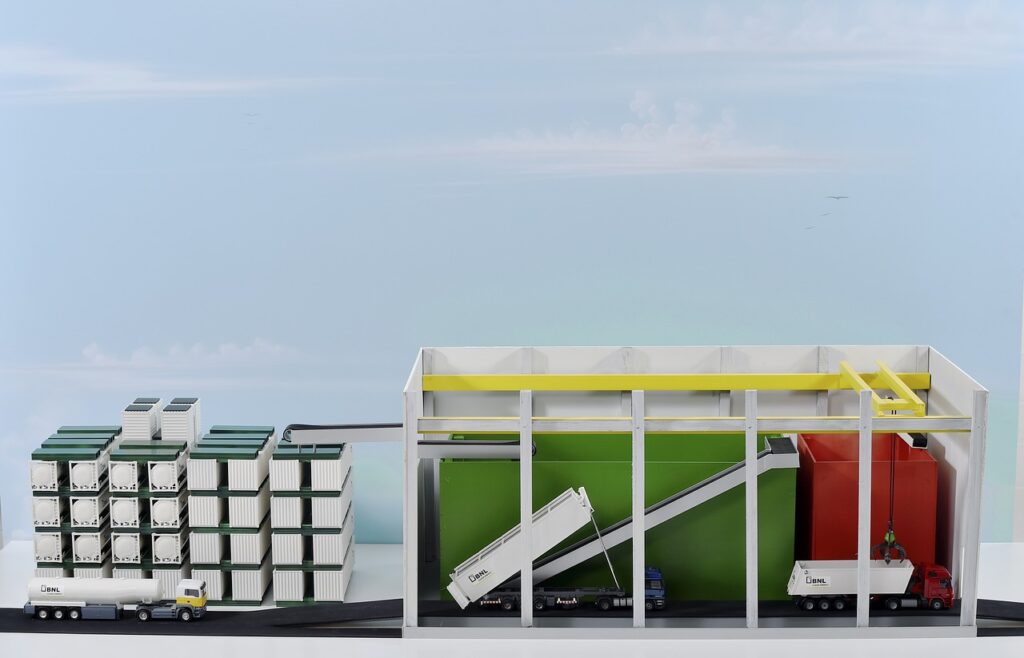Imagine a world where we have a sustainable and abundant source of biofuel, reducing our dependence on fossil fuels and helping to combat climate change. Well, it seems that this vision may not be so far-fetched. Recent studies have shown that water hyacinth, a vibrant aquatic plant often seen floating on lakes and rivers, could hold the key to unlocking the green energy revolution. With its rapid growth rate and impressive energy potential, water hyacinth has the power to transform our energy landscape and pave the way for a cleaner, greener future.

Benefits of Green Energy
Reducing carbon emissions
One of the major benefits of green energy, such as biofuels derived from renewable sources like water hyacinth, is the significant reduction in carbon emissions. Traditional fossil fuels emit greenhouse gases when burned, contributing to climate change. Green energy, on the other hand, produces much lower carbon emissions, making it a more sustainable and environmentally friendly option.
Decreasing dependence on fossil fuels
Another advantage of green energy is the decrease in dependence on fossil fuels. As finite resources, fossil fuels are not a sustainable option for meeting our energy needs in the long term. By investing in renewable energy sources like water hyacinth biofuels, we can reduce our reliance on fossil fuels and work towards a more sustainable energy future.
Promoting sustainable development
Green energy sources like water hyacinth biofuels can promote sustainable development in several ways. Firstly, they provide a reliable and renewable source of energy, ensuring that future generations will have access to clean power. Additionally, the production of green energy can create new job opportunities, stimulating economic growth and improving the overall well-being of communities.
Introduction to Water Hyacinth
Description and characteristics
Water hyacinth, also known by its scientific name Eichhornia crassipes, is a floating aquatic plant that belongs to the family Pontederiaceae. It is recognized by its vibrant green leaves and beautiful lavender or purple flowers. Water hyacinth is known for its rapid growth rate and ability to spread across bodies of water, forming dense mats of vegetation.
Growth and distribution
Water hyacinth is native to South America but has become invasive in many parts of the world. It thrives in tropical and subtropical regions, where the climate and water conditions are favorable for its growth. Invasive water hyacinth can cause significant ecological problems, including blocking waterways and reducing the oxygen levels of aquatic ecosystems.
Environmental concerns
While water hyacinth may be aesthetically pleasing, it poses several environmental concerns. Its fast growth rate and ability to reproduce quickly make it a highly invasive species, outcompeting native plants and disrupting natural ecosystems. Additionally, the dense mats of vegetation created by water hyacinth can block sunlight, reducing oxygen levels and harming aquatic life.

Biofuel Production from Water Hyacinth
Conversion processes
Biofuel production from water hyacinth involves several conversion processes. The plant is harvested from water bodies and then undergoes drying to remove moisture content. Next, it is processed through techniques like pyrolysis or anaerobic digestion to convert the biomass into useful energy forms such as bioethanol or biogas.
Challenges and potential solutions
There are several challenges involved in biofuel production from water hyacinth. Harvesting and transporting the plant from water bodies can be costly and labor-intensive. Additionally, the invasive nature of water hyacinth requires the effective management of the species to prevent its spread. Technological limitations in biomass conversion processes also pose challenges. However, innovative solutions such as improved harvesting methods, efficient transportation systems, and advancements in conversion technologies are being explored to overcome these obstacles.
Advantages of Water Hyacinth as a Biofuel Source
High growth rate
One of the significant advantages of using water hyacinth as a biofuel source is its high growth rate. This plant can rapidly multiply and cover large areas of water bodies, providing a plentiful biomass resource for biofuel production. Its ability to grow quickly makes it a promising and sustainable option for meeting energy demands.
Abundant availability
Water hyacinth is abundantly available in many tropical and subtropical regions, often causing problems as an invasive plant species. By utilizing water hyacinth as a biofuel source, we can address the environmental challenges posed by its rapid growth and turn it into a valuable resource.
Low cost
Compared to other biofuel sources, water hyacinth offers the advantage of low production costs. As an invasive species, its removal and management are necessary to protect water bodies and native ecosystems. By converting it into biofuel, we not only address the ecological concerns but also create a cost-effective and sustainable energy source.

Water Hyacinth’s Potential for Biofuel Generation
Evaluating energy content of water hyacinth
To assess the potential of water hyacinth as a biofuel source, evaluating its energy content is crucial. By determining the calorific value and energy density of water hyacinth biomass, scientists and researchers can understand its energy conversion potential and compare it with other biofuel sources.
Comparing with other biofuel sources
Water hyacinth’s potential for biofuel generation can be analyzed by comparing it with other biofuel sources. This allows us to understand its advantages and limitations in terms of energy output, sustainability, and environmental impact. By considering factors such as growth rate, availability, and conversion efficiency, we can determine the viability of water hyacinth as a biofuel source.
Environmental Impact of Water Hyacinth as Biofuel
Reducing carbon footprint
By utilizing water hyacinth as a biofuel source, we can significantly reduce our carbon footprint. Biofuels derived from water hyacinth emit much less carbon dioxide compared to traditional fossil fuels. This helps in combating climate change and promoting a more sustainable and environmentally responsible energy system.
Creating a sustainable cycle
Water hyacinth biofuel production can contribute to creating a sustainable cycle. As an invasive species, water hyacinth can be harvested and converted into biofuel, reducing its negative impact on aquatic ecosystems. This not only addresses the environmental concerns associated with water hyacinth but also provides a renewable energy source, forming a sustainable cycle that benefits both the environment and society.
Protecting water bodies
Water hyacinth can have detrimental effects on water bodies, such as blocking sunlight and reducing oxygen levels. By utilizing it as a biofuel source, we can effectively manage its growth, preventing the negative consequences it poses to aquatic ecosystems. This helps in protecting and preserving the health and biodiversity of water bodies.
Challenges in Utilizing Water Hyacinth as a Biofuel Source
Harvesting and transportation difficulties
One of the main challenges in utilizing water hyacinth as a biofuel source is the harvesting and transportation process. Due to its floating nature, harvesting water hyacinth can be labor-intensive and time-consuming. Additionally, transporting the bulky biomass from water bodies to biofuel production facilities can be logistically challenging.
Managing invasive species
Water hyacinth is an invasive species that can outcompete native plants and disrupt natural ecosystems. Managing the spread of water hyacinth while utilizing it as a biofuel source requires effective invasive species management strategies. This includes monitoring and controlling its growth to prevent further ecological damage.
Technological limitations
The conversion of water hyacinth into biofuel presents technological limitations. The efficiency and cost-effectiveness of biomass conversion processes need to be improved to make water hyacinth biofuel production more viable on a large scale. Advancements in technology and research are necessary to overcome these limitations and optimize the energy output from water hyacinth biomass.
Technological Innovations for Water Hyacinth Biofuel
Development of efficient conversion methods
Technological innovations are underway to develop more efficient conversion methods for water hyacinth biofuel production. Scientists and engineers are working on improving the efficiency and effectiveness of processes like pyrolysis, anaerobic digestion, and fermentation. These advancements aim to maximize the energy output while minimizing the environmental impact of water hyacinth biofuel production.
Exploring biorefining techniques
Biorefining techniques are being explored to enhance the utilization of water hyacinth as a biofuel source. Biorefineries aim to extract multiple valuable products from biomass by utilizing various refining processes. By exploring biorefining techniques, we can extract not only biofuel but also other valuable by-products, making water hyacinth biomass utilization more economically and environmentally beneficial.
Community Engagement and Water Hyacinth Biofuel
Creating employment opportunities
Water hyacinth biofuel production can create employment opportunities, particularly in regions where the plant is abundant and poses significant ecological challenges. The harvesting, processing, and conversion of water hyacinth require a skilled workforce, creating new jobs and contributing to local economic development.
Engaging local communities in biofuel production
Engaging local communities in water hyacinth biofuel production can have multiple benefits. By involving community members in the process, it fosters a sense of ownership and responsibility towards the environment. Additionally, community engagement can lead to knowledge sharing, capacity building, and the development of innovative solutions that address the specific challenges associated with water hyacinth biofuel production.
Conclusion
Water hyacinth shows great potential as a biofuel source, offering numerous advantages such as high growth rate, abundant availability, and low cost. While there are challenges to overcome, including harvesting and transportation difficulties, managing invasive species, and technological limitations, ongoing research and innovation are paving the way for more efficient and sustainable water hyacinth biofuel production. By harnessing the power of this invasive plant, we can reduce our carbon footprint, promote sustainable development, and protect our precious water bodies. With community engagement and the adoption of technological innovations, water hyacinth biofuel has the potential to play a significant role in our transition towards a greener and more sustainable energy future.